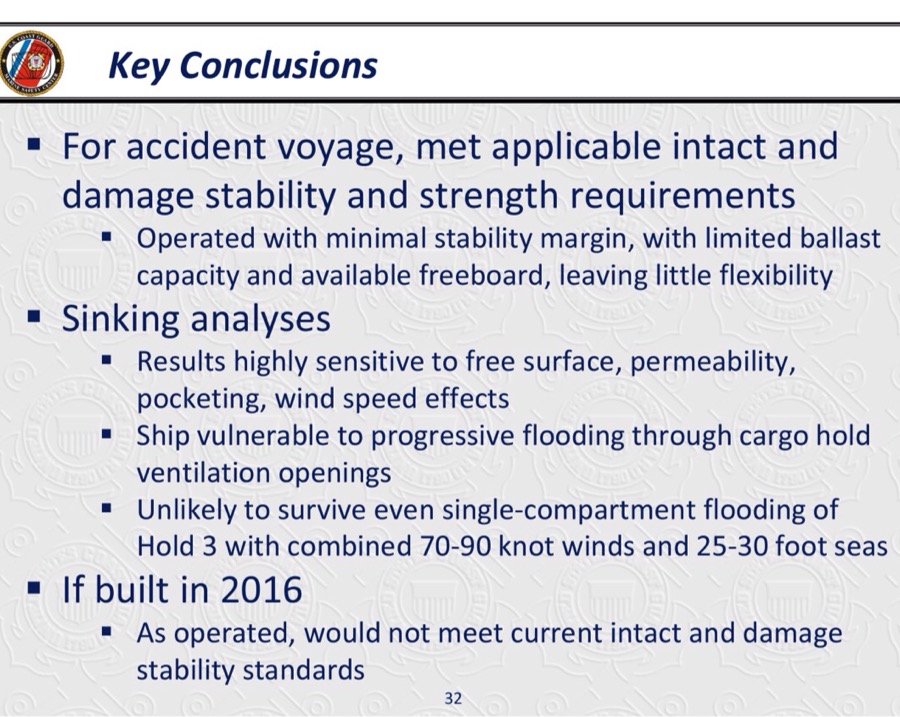It is quite extraordinary that with the help of the S-VDR we are now able to get a minute by minute account of the last hours and moments of a dying ship. Reading it on paper is one thing but to actually having to listen to the audio recordings is another thing and must be difficult, eerie and sometimes heart breaking. Even shifting cargo can heard, cars, trucks and trailers probably dominoing.
M1/M2 06:56:14.4 06:56:16.5 [multiple low frequency thuds and clashes, like metal crashing.]
Another example concerns the list of the vessel.
CAPT-ET 07:17:04.1 07:17:06.1 you think the list is getting worse?
CAPT-ET 07:17:06.2 07:17:07.1 ya me too.
Lashing is a critical thing for the safety of the ship. The chief mate has his doubts as is shown by the recording and that is confirmed by the report here.
CM 07:24:51.6 07:25:01.1 it’s– it’s– they don’t they don’t do the lashing the way it oughta be done.
CAPT 07:30:16.3 07:30:17.4 Bow is down
CAPT 07:30:19.4 07:30:20.4 Bow is down
In that case they also have a trim if about 10°, apart from the ever increasing list which makes it almost impossible to move on the ship. The AB on the bridge, who is in total panick, asks Davidson for a ladder…
It must be said that the captain was very empathic and brave with this man and spends his last minutes trying to help him, not everybody for himself, which is quite special and shows a strong character up to the end.
M1 07:39:32.2 07:39:41.8 [sound of building low frequency rumble until end of recording.]
This is seconds for the final moment, probably water rushing into the holds.
